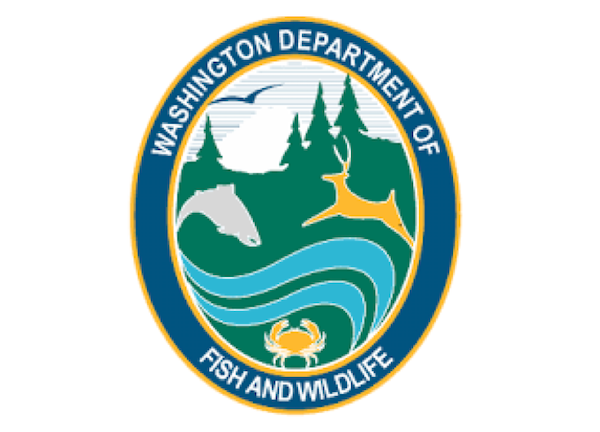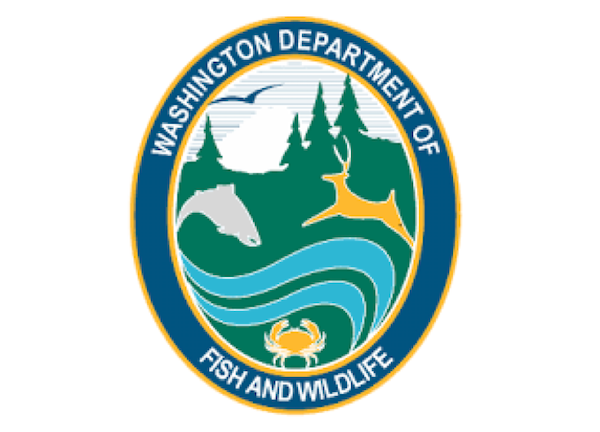Idaho Fish Report
First female grizzly bear captured, radio collared, and released onsite in Washington

by WA Department of Fish & Wildlife Staff
7-16-2021
Website
SPOKANE – In a first for Washington state, wildlife biologists recently captured and fitted a female grizzly bear (Ursus arctos) with a radio collar. The bear, accompanied by three yearling offspring, was then released to help biologists learn more about grizzly bears in Washington state.
“Understanding how the bears are using the landscape will aid biologists in advancing recovery of the species” said Hannah Anderson, WDFW’s Diversity Division Manager.
The bear was captured about ten miles from the Washington-Idaho border near Metaline Falls in northeast Washington on U.S. Forest Service land by U.S. Fish and Wildlife Service (Service) biologists. The three yearlings dispersed into the surrounding woods while biologists did a general health check on the mother and fitted her collar, then returned to be with mom when the humans went away.
Biologists were alerted to the presence of the bear through images captured on cameras, inside the Selkirk Grizzly Bear Recovery Zone in a remote area of the Selkirk Mountains. The area is one of six Recovery Zones identified by the Service’s species’ Recovery Plan. Grizzlies in that area roam between northern Idaho, northeastern Washington, and southeastern British Columbia. The population in the Selkirk Recovery Zone is considered healthy and is growing at a rate of about 2.9% per year. Biologists believe the recently collared female is a resident of the area, not a dispersing bear from outside of Washington.
“A group of bears - a mother and three cubs - were photographed on another occasion on a game camera in the same area three to four weeks prior to the capture,” said Wayne Kasworm, grizzly bear biologist with Service. “The natal collar - the white ring around the neck - of one of the cubs leads us to believe this is the same family of bears.”
Four adult males were captured in 1985, 2016 and 2018, but this was the first instance of a female capture, and in this case a female with young.
“Currently there are believed to be at least 70 to 80 grizzly bears in the Selkirk Grizzly Bear Recovery Zone,” said Kasworm. “About half those bears live on the Canadian side of the border, with the other half on the U.S. side.”
Many people are surprised to learn that there is a population, although small, of grizzlies in northeast Washington.
“Grizzly bears once occupied much of the Cascade and Selkirk Ranges, but their numbers were severely reduced as a result of persecution by early settlers and habitat degradation. Grizzly bear recovery started in 1981 and it took 40 years to confirm the first known female in Washington, that’s pretty remarkable,” said Rich Beausoleil, a bear and cougar biologist with WDFW. “Wayne and his team have been working hard and deserve a lot of credit, they’ve been great partners.”
Today, grizzly bears are listed as a threatened species under the federal Endangered Species Act and classified as an endangered species in Washington. WDFW works collaboratively with the Service, which is the lead agency for monitoring grizzly bear survival, reproduction, home range use, food habits, genetics, and causes of mortality. Other partners in grizzly bear conservation within this region include the Kootenai Tribe of Idaho, Kalispel Tribe of Indians, Colville National Forest, Idaho Panhandle National Forests, Idaho Fish and Game, Idaho State Department of Lands, and Stimson Lumber.
People recreating in grizzly country should know what to do in the case of an encounter with a grizzly or black bear and how to use bear spray. Information is available on the WDFW and Interagency Grizzly Bear Committee (IGBC) websites. Being a federally threatened and state-listed endangered species, the grizzly bear has added protections for its conservation, so it is important to be able to differentiate between grizzlies and the other species of bear in Washington, black bears. Killing a grizzly bear, either unintentionally or intentionally, sets back recovery efforts and can bring fines and penalties. For these reasons, black bear hunters in parts of Washington state must successfully complete the WDFW bear identification test or an equivalent test from another state and carry proof of successful completion. WDFW’s video on identifying bears can also help.
The Washington Department of Fish and Wildlife works to preserve, protect and perpetuate fish, wildlife and ecosystems while providing sustainable fish and wildlife recreational and commercial opportunities.
The U.S. Fish & Wildlife Service works with others to conserve, protect and enhance fish, wildlife and plants and their habitats for the continuing benefit of the American people.

